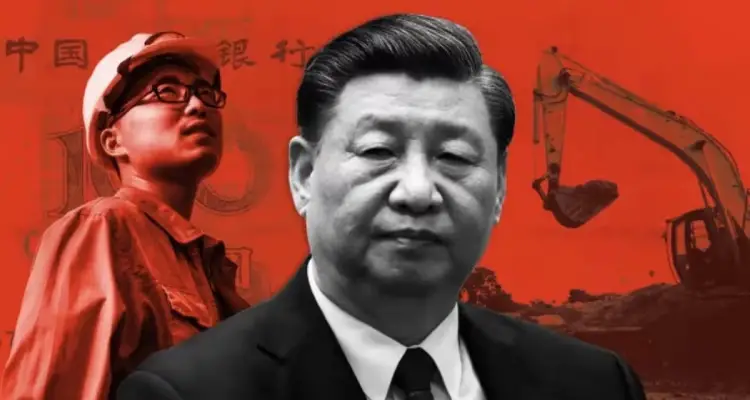
China's Economic U-Turn: What it Means for the World
The rise of China to importance in the global economy is taking a historic turn back. It might be the end of the biggest worldwide narrative of the last fifty years.
China opened up to the outside world in the 1980s, and in the decades that followed, it flourished, having stagnated under Mao Zedong in the 1960s and 1970s. From less than 2% of the world economy in 1990 to 18.4% in 2021, its percentage increased by almost ten times. No country has ever risen so quickly and so far.
Then the opposite happened. China economic share in the global economy declined somewhat in 2022. It is expected to decrease even more drastically this year, to 17%. The 1.4% decline over the past two years is the biggest since the 1960s.
These figures are expressed in nominal dollar values, which are the most accurate representation of a country relative economic strength because they are not adjusted for inflation. Although it may be getting harder to achieve, China wants to restore the imperial status it had from the 16th to the early 19th century, when its contribution to global economic output peaked at one-third.
The world could be rearranged by China fall. The country GDP share has increased since the 1990s, mostly at the expense of Japan and Europe, whose GDP shares have remained relatively stable over the last two years. The US and other growing countries have mostly filled the void left by China.
In context, the global economy is predicted to expand by $8 trillion in 2022 and $105 trillion in 2023. Of that gain, China will receive none, the US will receive 45%, and other emerging countries would receive 50%. Of these, just five will account for half of the gains for growing nations: India, Indonesia, Mexico, Brazil, and Poland. That is a very clear indication of potential future power changes.
Furthermore, neither independent nor foreign sources can account for China declining nominal GDP share of the global economy. Part of their official GDP data is available, including the nominal statistics. Beijing claims that China rise is reversing.
The fact that most analysts concentrate on real GDP growth—which is adjusted for inflation—is one reason why this has largely gone overlooked. Furthermore, Beijing has long been able to claim that real growth is consistently reaching its declared target of 5% by ingeniously accounting for inflation.
In turn, this seems to support the official narrative that "the east is rising" on a quarterly basis. However, the total number of workers joining the labor market plus output per worker indicates that China real long-term potential growth rate is currently closer to 2.5 percent.
China President Xi Jinping has in the past expressed supreme confidence that history is shifting in his country favour, and nothing can stop its rise. His meetings with Joe Biden and US chief executives at last week summit in San Francisco did hint at moderation, or at least a recognition that China still needs foreign business partners. But almost no matter what Xi does, his nation share in the global economy is likely to decline for the foreseeable future. It is a post-China world now.